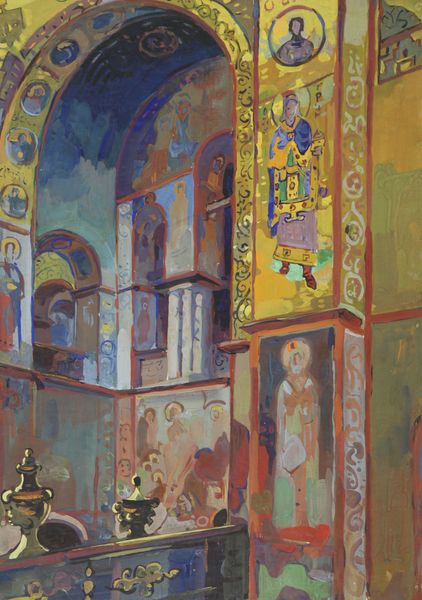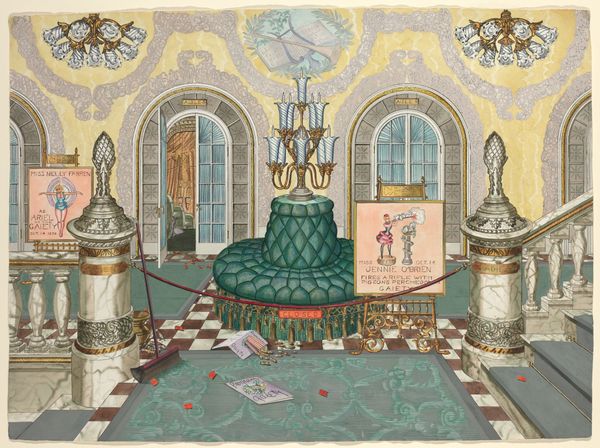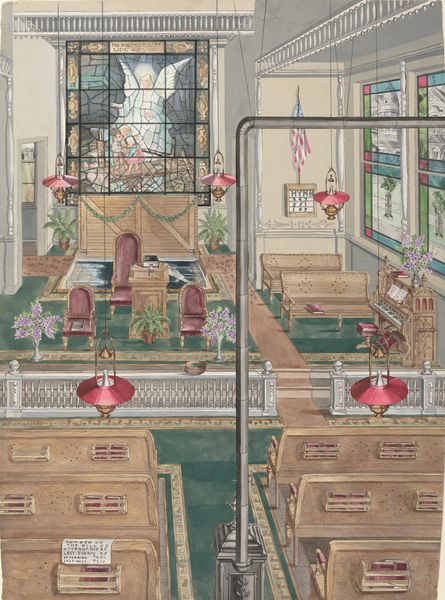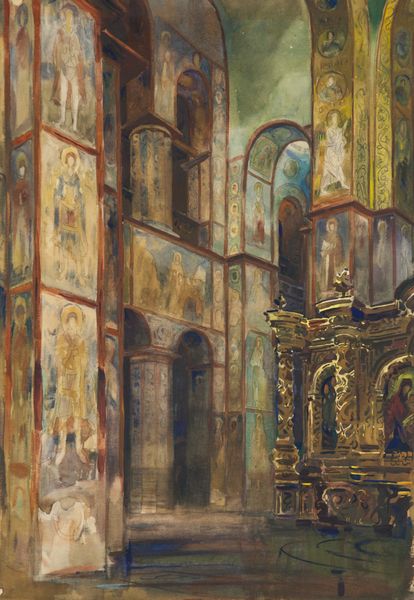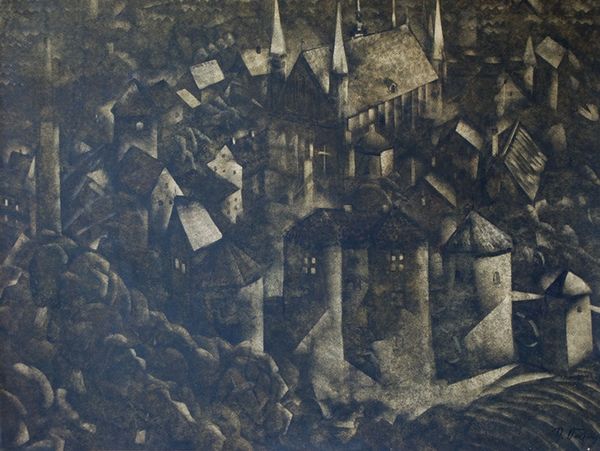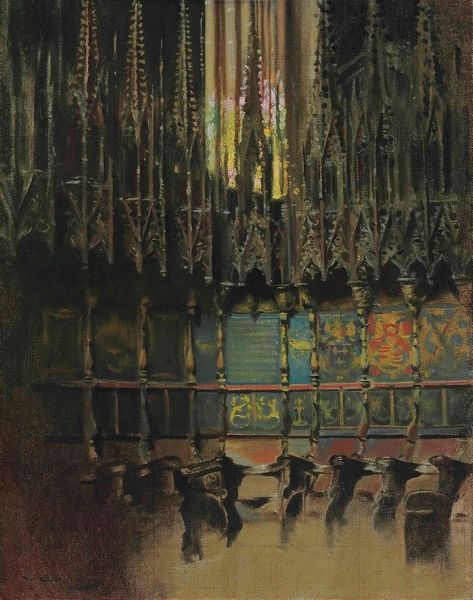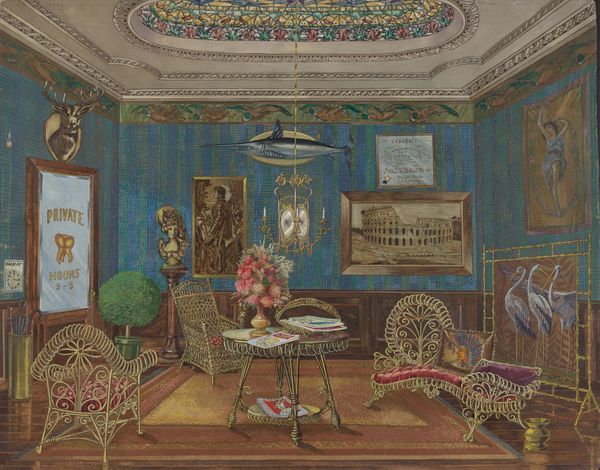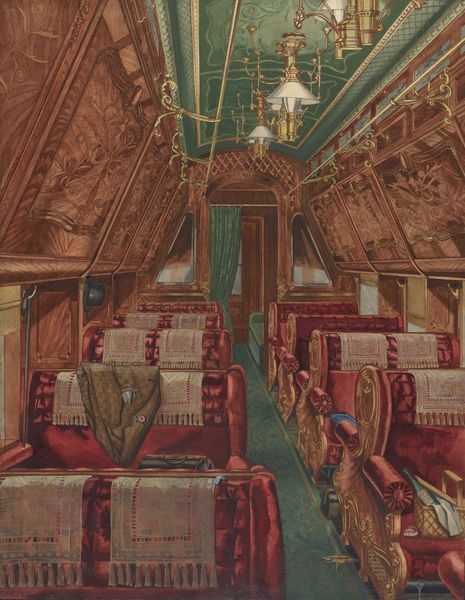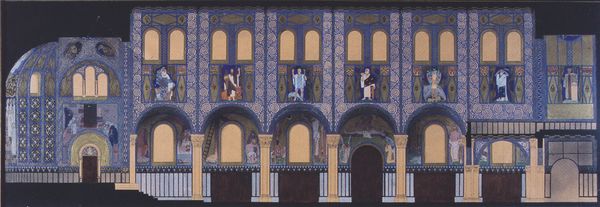
painting, oil-paint
#
baroque
#
painting
#
oil-paint
#
perspective
#
group-portraits
#
genre-painting
#
history-painting
Dimensions: height 52 cm, width 66 cm
Copyright: Rijks Museum: Open Domain
In Bartholomeus van Bassen's "The Great Assembly of 1651," banners emblazoned with heraldic devices dominate the scene. These flags, symbols of power and allegiance, evoke the long history of dynastic struggles and national identities in Europe. The banners, reminiscent of ancient Roman vexilla, are not mere decorations; they are potent emblems that connect the assembly to a lineage of authority. Consider how similar motifs reappear in Renaissance tapestries and medieval battle standards, each bearing its unique imprint yet echoing a shared ancestral language of heraldry. The display of these emblems points to a psychological dimension: the desire to assert dominance and inspire loyalty through symbolic representation. These symbols act as a visual shorthand, instantly evoking shared histories and cultural values. The banners in "The Great Assembly" are not static relics but dynamic carriers of cultural memory. Like the serpent that bites its own tail, these symbols embody a cyclical return, continuously resurfacing to shape our understanding of power and identity.
Comments
rijksmuseum about 2 years ago
⋮
This is the Ridderzaal (Hall of Knights) at the Binnenhof in The Hague. Hanging from the ceiling are Southern Netherlandish and Spanish flags captured during the war. The representatives of the seven provinces of the Dutch Republic are gathered in the hall. When Stadholder William II, son of Frederick Henry, dies at the end of 1650, most of the provinces decide after lengthy deliberations not to appoint a new stadholder on 21 August 1651. The war is over, and – as they concur – the country is more than able to face the future without the Oranges.
Join the conversation
Join millions of artists and users on Artera today and experience the ultimate creative platform.
